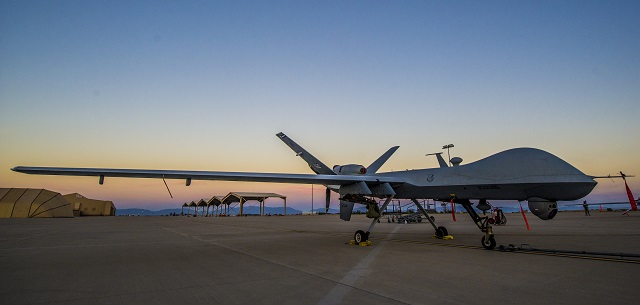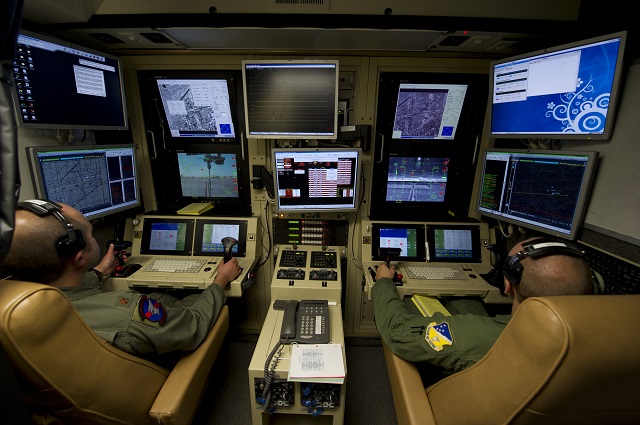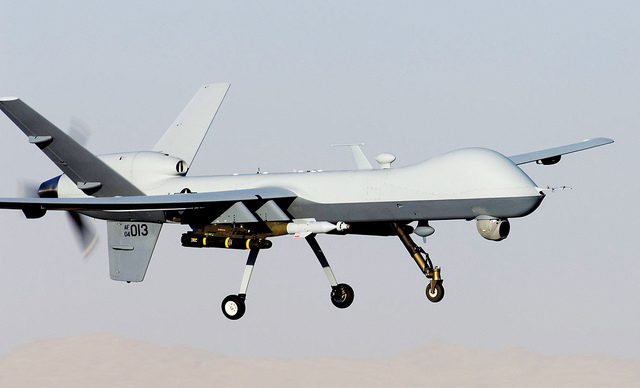The US Air Force says it has avoided 17 more MQ-9 Reapers crashes since last April thanks to a backup electrical system that has been installed as a safeguard against a still-undetermined problem with the starter-generator on the Block 1 version's Honeywell turboprop engine.
Speaking at a congressional hearing on army and air force unmanned aircraft programmes, US Air Combat Command chief Gen Herbert Carlisle says many General Atomics Aeronautical Systems MQ-9 Block 1 crashes have been directly linked to starter-generator failures, resulting in an Electrical Safety Improvement Programme (ESIP) that installs a direct-drive, brushless alternator that keeps the aircraft flying for another 10h. The faulty starter generator is not a Honeywell product but was purchased and integrated separately by General Atomics, Honeywell notes.
“Since last April, we have recovered 17 MQ-9s using this direct drive, brushless alternator,” says Carlisle.
The air force has lost dozens of MQ-9s over the years, at a cost of between $20 million and $25 million per aircraft, according to Pentagon documents. Significantly more MQ-1s have been lost in combat and the type will be phased out by 2018.
A Washington Post report quoted by one US lawmaker identified 10 MQ-9 and 10 MQ-1 crashes in 2015, when operations were stepping up against terrorist networks in Afghanistan, Iraq, Syria and across Africa.
“It has generally been centralised on the starter-generator on the MQ-9 community,” says Carlisle. “The new MQ-9s, the Block 5 MQ-9s that we are producing now, have a different electrical system, so it does not have the same starter-generator and does not have the same problem.”

US Air Force
The general says the air force has been working with the manufacturer to identify the problem and uncovered some “quality control issues”.
“We have still not found the root cause,” he says.
General Atomics’ “Block 1-plus Predator", known to the military as the MQ-9 Block 5, first flew in 2012. It features a replacement high-capacity starter-generator and backup generator.
"GA-ASI stands behind the proven reliability of our multi-mission Predator B/MQ-9 Reaper, which continues to maintain a 90% mission capable rate in the US Air Force inventory, with more than 2.2 million-plus flight hours flown across all customers," the company says in a statement.
In February, there were 134 MQ-1Bs and 176 MQ-9As in the inventory, according to air force data.

US Air Force
Carlisle says more than 77% of MQ-1 and MQ-9 “cockpits” – meaning the ground control stations – are engaged in combat around the globe. The remaining 23% are dedicated to training and testing.
For some time, the Air Force has faced a pilot shortfall, remaining 199 airmen short of its full pilot manning requirement. ACC has been authorised to grow its MQ-1/9 pilot staff from 981 today to 1180. The service wants another 300 pilots on top of that 1180 numbers so at least one-third of the force can "dwell" and train instead of being continually engaged in combat operations.
ACC, which is charged with training and equipping combat air forces, is also 511 fighter and attack aircraft pilots short of its need.
“If you include the entire fighter shortfall, that’s a pretty large number,” says Carlisle. The air force maintains 284 A-10s, 963 F-16s, 429 F-15s, 183 F-22s and a growing number of F-35s.

US Air Force
Source: FlightGlobal.com






















